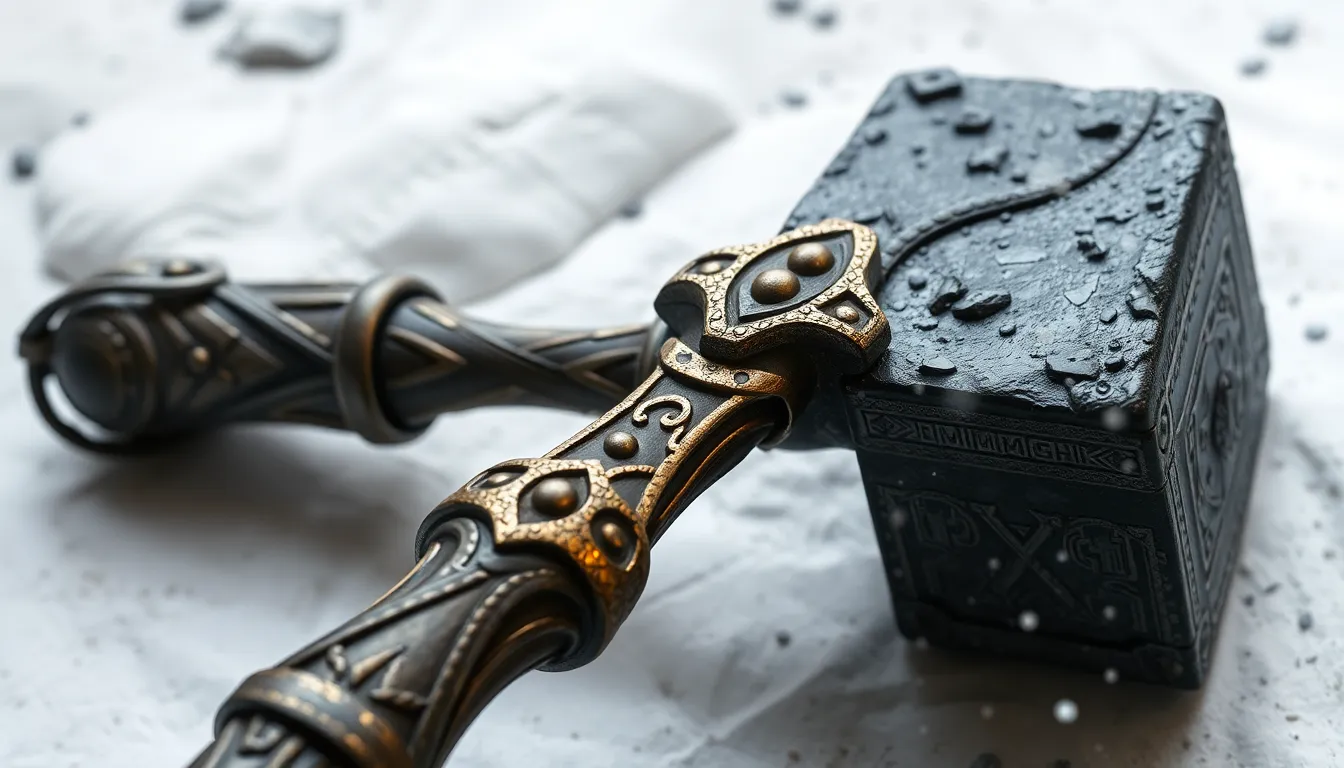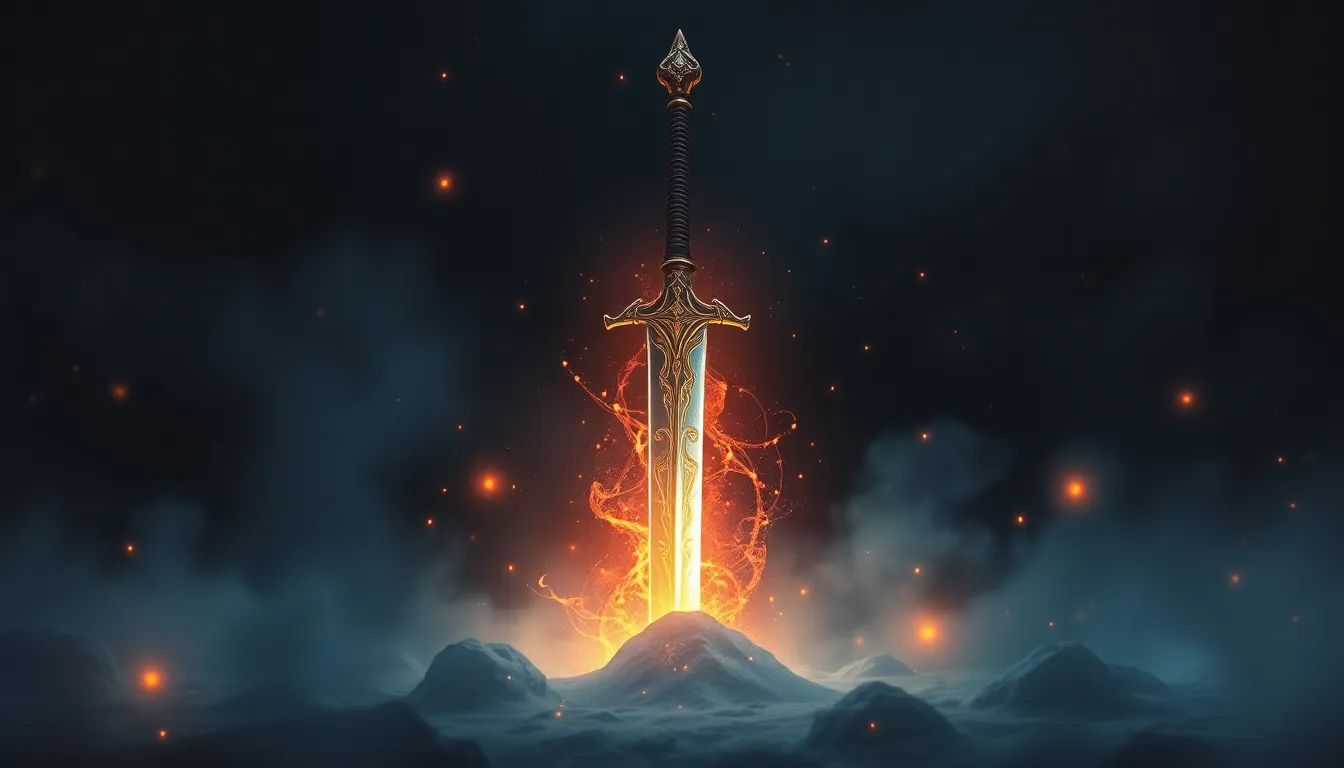Mjölnir: The Enigmatic Hammer of Thor Explained!
Introduction to Mjölnir
In the realm of Norse mythology, few symbols are as iconic as Mjölnir, the mighty hammer wielded by Thor, the God of Thunder. Mjölnir is not just a weapon; it represents protection, power, and the divine right to defend the cosmos against chaos and evil. Thor, known for his strength and bravery, is one of the most beloved deities in the Norse pantheon, and his hammer is a central element in many tales that highlight his heroic exploits.
The Mythological Origins of Mjölnir
The origins of Mjölnir are steeped in myth. According to legend, the hammer was forged by the skilled dwarves Sindri and Brokkr. The creation story tells of a wager between Loki, the trickster god, and the two dwarves. Loki, having cut off the hair of Sif, Thor’s wife, promised to provide her with even more beautiful hair. To fulfill this, he tricked the dwarves into creating not only Mjölnir but also other magical items.
The hammer was crafted using a combination of enchanted materials, which included the heart of a dying star and the essence of thunder. This remarkable craftsmanship endowed Mjölnir with unparalleled abilities, from returning to Thor’s hand after being thrown to generating thunder and lightning.
Symbolism and Power of Mjölnir
Beyond its physical capabilities, Mjölnir symbolizes protection and blessing. It was often used in ancient Norse rituals to bless marriages, births, and even agricultural endeavors. The act of raising Mjölnir in ceremonies underscored its role as a protective force against malevolent entities.
Moreover, Mjölnir embodies Thor’s power and destructive potential. When wielded in battle, it could level mountains and vanquish giants, making it a formidable weapon in the eternal struggle between gods and their foes.
Mjölnir in Norse Mythology
Mjölnir features prominently in various myths. One of the most famous tales is the story of the theft of the hammer by the giant Thrym, who demands the goddess Freyja as his bride in exchange for its return. Thor, disguised as Freyja, outsmarts Thrym and ultimately reclaims his hammer, showcasing both the hammer’s importance and Thor’s cleverness.
Furthermore, Mjölnir plays a crucial role in the battles against the giants, the prime antagonists of the gods. In these epic confrontations, the hammer serves as a symbol of divine justice and strength, reinforcing the narrative of order triumphing over chaos.
Cultural Significance Beyond Mythology
Mjölnir’s impact extends beyond ancient myths; it significantly influenced Viking culture and rituals. The hammer was not only a weapon but also a talisman, representing the strength and protection of Thor. Vikings wore amulets shaped like Mjölnir, believing that it would shield them from harm.
In contemporary Scandinavian societies, Mjölnir remains a potent symbol. It is often associated with Norse heritage and is embraced in various forms, from jewelry to artwork, as a connection to the past.
Art and Iconography of Mjölnir
Depictions of Mjölnir can be found in ancient artifacts, such as the famous Mjölnir amulets discovered throughout Scandinavia. These artifacts highlight the reverence held for Thor and his hammer during the Viking Age.
In modern media, Mjölnir has been prominently featured in various forms of art and pop culture. From comic books to blockbuster films, the hammer’s imagery is recognizable worldwide, often representing not only Thor but also ideals of heroism and strength.
Mjölnir in Modern Media
In recent years, Thor’s portrayal in comic books, particularly those published by Marvel, has brought Mjölnir into the global spotlight. The character’s adaptation into movies has further cemented the hammer’s status as an iconic weapon. Films like Thor and Avengers showcase Mjölnir’s characteristics, including its magical properties, and Thor’s deep connection to it.
The storytelling in these adaptations often explores themes of worthiness, as only those deemed worthy can wield Mjölnir. This notion adds layers to the character of Thor and highlights the moral undertones associated with power and responsibility.
The Legacy of Mjölnir
Today, Mjölnir stands as a cultural icon, inspiring literature, gaming, and merchandise. Its legacy is evident in countless adaptations and interpretations across various media. The hammer symbolizes not only Norse mythology but also a broader human fascination with power, divinity, and the heroic journey.
Merchandise featuring Mjölnir, from replicas to clothing, continues to thrive, demonstrating its lasting appeal. Fans of mythology and pop culture alike find a connection to the stories and symbols that Mjölnir represents.
Comparative Analysis: Mjölnir and Other Mythological Weapons
When comparing Mjölnir to other mythological weapons, it shares similarities with iconic items such as Excalibur from Arthurian legend and Zeus’s lightning bolt from Greek mythology. Each weapon embodies themes of power, divinity, and heroism:
- Excalibur: Represents rightful kingship and divine right.
- Zeus’s Lightning Bolt: A symbol of authority and control over the gods and mortals.
- Mjölnir: Embodies protection, strength, and the fight against chaos.
These weapons, while unique to their respective mythologies, share a common thread of representing the struggle between good and evil, and the power wielded by their bearers.
Conclusion: The Enduring Enigma of Mjölnir
Mjölnir continues to captivate audiences because it encapsulates the essence of heroism, strength, and divine protection. As a symbol that has transcended time, it invites exploration into the complexities of mythology and human experience. With its rich history and modern adaptations, Mjölnir is likely to remain a significant part of cultural narratives for generations to come.
As we look to the future, the enigma of Mjölnir will undoubtedly continue to inspire new stories, art, and interpretations, ensuring that its legacy endures in both mythology and modern culture.




